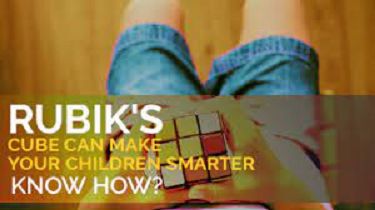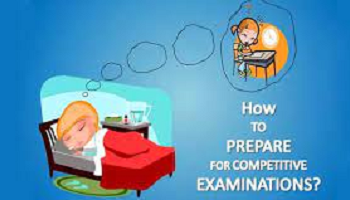We all know the Rubik’s cube, that “demonic” piece with which we have all played and very few without resorting to videos or a friend, have been unable to solve. However, few know the hundreds of benefits for children that this Rubik’s game brings to our children, without going any further in the psychomotor development of our children. Today we leave you an article where you will see the benefits of playing with the Rubik’s cube in children
What is the Rubik’s cube?
The magic cube or Rubik’s cube is a mechanical cube that has 6 faces of different colors: white, yellow, blue, red, green and orange. In turn, each face is divided into 9 squares that can be moved horizontally or vertically.
In this way, it is possible to change individually (and thanks to an internal axis mechanism) each of those 9 pieces that each face has. This turns the cube into a puzzle and a game of brain teaser and logic that turns out to be a challenge for children and adults. This cube-puzzle was created in 1974 by the Hungarian-born professor and sculptor Erno Rubik.
Motor Development with the Rubik’s Cube – 5 Benefits of the Rubik’s Cube
As for the benefits that this cube promises, it is not only limited to spending time entertaining for children and adults; It is basically a game that promotes intellectual development, that is, it puts the brain to work. However, it is possible to make a detail of the benefits within the intellectual development that this cube provides in each of the children.
1️. Develops mathematical skills , as it allows you to understand spatial relationships. It also allows you to view different directions, sizes, and combinations, which is especially useful for learning mathematics.
2️. It allows a greater knowledge at a spatial level . By training the brain with this Rubik’s cube , each child can mentally reproduce the objects around him.
3️. Develops memory and information retention .
4️. Encourage patience .
5️. It promotes creativity, since each person will try to find different ways and methods for the development of the problem, that is, so that each of the faces again have, in its 9 different pieces, the same color.
Benefits of the Rubik’s Cube for Children with Disabilities
This game is not only beneficial for children or adults; it also allows to stimulate the diverse capacities in children with disabilities .
● For children with ASD (autism spectrum disorder). Encourages concentration. The colors produce a relaxing effect (similar to the Montessori Calm bottle). Stimulates your senses (visual and tactile).
● For children with ADHD (Attention Hyperactivity Disorder). It also allows to raise the concentration levels in children, producing a relaxation effect in them.
● For visually impaired children . In this case, it will be necessary to buy a Rubik’s cube that has a certain relief so that children can recognize the different colors. However, it is possible to do it manually and at home by adding different textures on each of the faces. That is, a different texture for each face of the cube.
Rubik’s cube models
The classic Rubik’s cube continues to be the best-selling and preferred by adults and children.
However, there are variants that can attract attention and that, for the purposes of learning and intellectual development, are equally beneficial.
2 x 2 cube
It is a magic cube that, as its name indicates, is 2 x 2. That is, instead of having 9 pieces on each side of the cube, it only has 4. It is excellent for children from 7 to 8 years old. .
Pyraminx
This is one of the strangest variants and it was created by Uwe Meffert in 1970. It is possible to solve it but with a maximum of 11 spins in total.
Dodecahedron
It has 12 faces, each with a different color, which makes this one of the most difficult variants when it comes to resolution.
Rubik’s Cube 4 x 4
This variant is similar to the traditional one, only that instead of having 9 pieces on each side, it has 16 pieces.
Incentives for children when playing with the Rubik’s cube
Children often lose motivation in solving the Rubik’s cube since (on the one hand) they lack incentive to play with it and (on the other) they cannot solve the cube so easily, which can generate a feeling of frustration in them. However, we must convey to the children that ” everything is according to the glass with which things are looked at “.
Next, we will see some incentives for children when playing with the Rubik’s cube that we can suggest:
● Self-improvement . This game allows self-improvement. Let the child feel stimulated and motivated by your words as a parent or teacher. It doesn’t matter if you can’t solve all the faces of the cube at first. The important thing is that you make partial progress and that you learn to enjoy your achievements.
● Playing in turns with times . If you want to stimulate their creative and solving speed, set a clock or stopwatch and let each child solve a part of the cube in a given time.
● Competition in groups with the Rubik’s cube . To encourage teamwork (up to 3 or 4 people), a game can be proposed where each team has a Rubik’s cube and tries to partially or totally solve the puzzle.
Conclusion
We are faced with a classic didactic instrument, which the vast majority of us know, but perhaps due to a lack of knowledge or apparent difficulty it means that we do not see the great utility it has for different subjects, making logical-mathematical learning fun for The students. Rubik’s Cube class helps children to enhance spatial and logical-mathematical intelligence.
Assembling magic cubes not only provides a hobby, it also helps with intellectual development. Easy to transport, a Rubik’s cube encourages, from turn to turn, to work the brain.











